


There is no formal requirement for photometric accuracy in the 3-Band Cryogenic data. The following analysis assesses the accuracy without concern to the Allsky photometric accuracy requirement.
We will be assessing the photometric accuracy of the WPRO (profile-fitting) photometry of bright stars using the internal repeatability of WPRO measurements. However, in order to draw the sample to study, we will be using the S/N as given by the standard aperture photometry. The reason is that the WPRO S/N includes a contribution due to the uncertainty in the Point Spread Function (PSF), essentially flooring all S/N values to be less than S/N=60 or so; whereas, the aperture photometry provides a reasonable estimate of source's S/N in a given band.
For detailed study (Figures 1-4, presented below), we will first draw a clean sample of bright starsfrom high galactic latitudes, avoiding the inner Galactic Bulge. We then draw samples from other large regions of the sky stepping closer to the Plane of the Galaxy. The results are presented below.
The W1 repeatability results for the bright S/N > 100 sample are shown
in Figure 1. The panels show, per band, the standard deviation in the population (parameter
w?sigP1),
representing the RMS of WPRO measurements for one frame.
The results show that the photometric accuracy for each band, as indicated by the
repeatability RMS (w?sigP1), is ~2 to 3%, well within the 4-band Cryo requirement of 7% for bright S/N > 100 sources.
Figure 1: High Galactic Latitude Sky: 40 > GLAT < 60 deg
 |
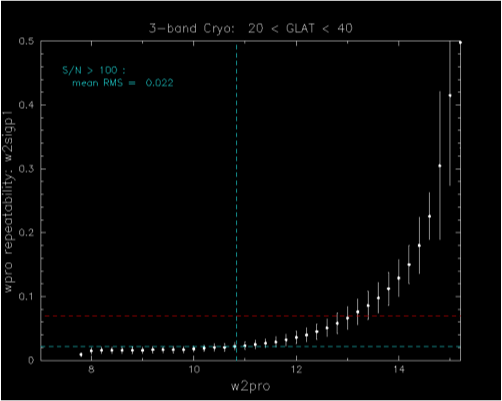 |
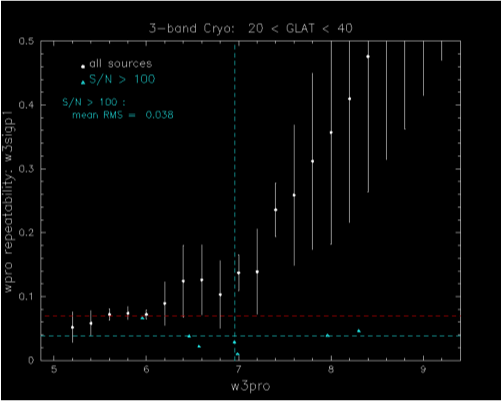 |
| Figure 2a - WPRO internal repeatability RMS of W1. | Figure 2b – WPRO internal repeatability RMS of W2. | Figure 2c – WPRO internal repeatability RMS of W3. |
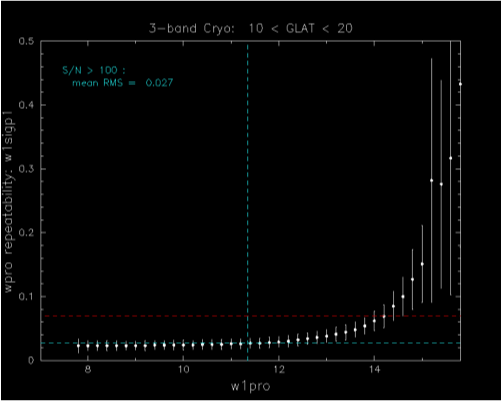 |
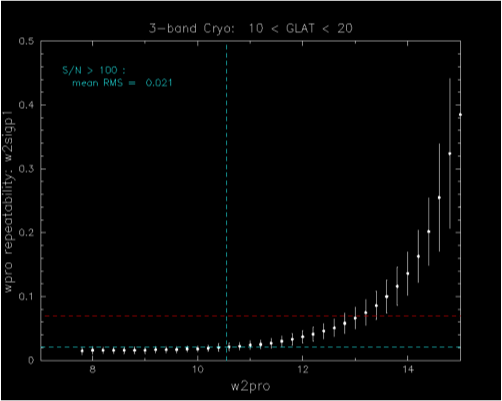 |
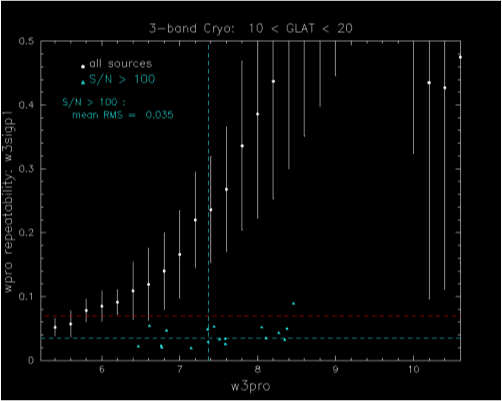 |
| Figure 3a - WPRO internal repeatability RMS of W1. | Figure 3b – WPRO internal repeatability RMS of W2. | Figure 3c – WPRO internal repeatability RMS of W3. |
 |
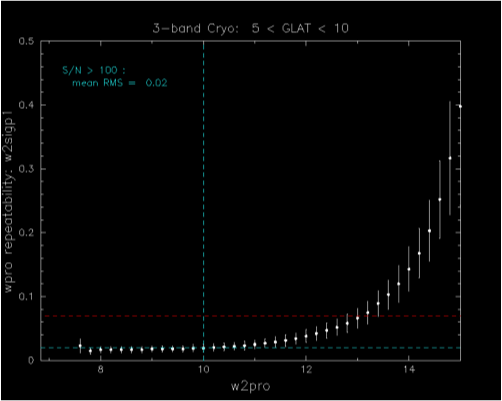 |
 |
| Figure 4a - WPRO internal repeatability RMS of W1. | Figure 4b – WPRO internal repeatability RMS of W2. | Figure 4c – WPRO internal repeatability RMS of W3. |
 |
 |
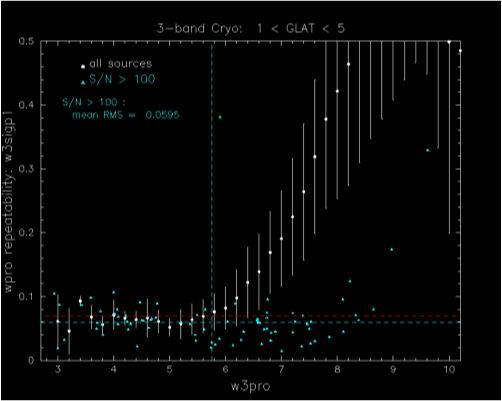 |
| Figure 5a - WPRO internal repeatability RMS of W1. | Figure 5b – WPRO internal repeatability RMS of W2. | Figure 5c – WPRO internal repeatability RMS of W3. |
 |
Observed WPRO 3-band Cryo W1 and W2 repeatability satisfies the relative photometric accuracy requirement of 4-band Cryo. W3 is clearly noisy, although the (strictly defined) S/N>100 photometry is still quite good.
Comparison of WISE W1 and W2 with Spitzer photometry (S/N > 100) is consistent with "accurate" WISE photometry, exceeding the Level-1 requirement.
Last update: 2012 December 10


